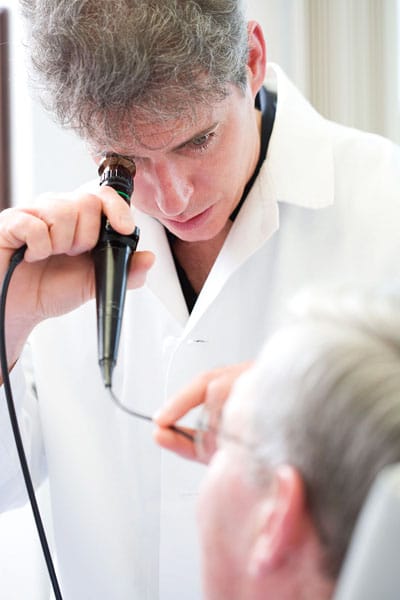
Septal deviations can be diagnosed in one of three ways. The first will detect deviations in the front of the nose, while the second and third can detect deviations further back in the nasal passages.
Step 1 – Examination
A simple examination will detect deviations that may be in the front of the nose.
Step 2 – Nasal Endoscopy
A nasal endoscopy is performed in the office by sliding a tiny camera mounted on a slender telescope and passing it through the nostrils.
This procedure is well tolerated, and although some patients may prefer a numbing nasal spray prior to the procedure, generally an endoscopy can be completed with no special medications at all.
Step 3 – MiniCAT Instant CT Scanner
The MiniCAT Instant CT scanner creates high-quality images of the sinuses in 20 – 40 seconds while the patient sits upright comfortably in an open chair. The low-dose CT uses only 10% of the radiation dose used typically with CT scanners, and the procedure can be performed in the office. Learn more about the MiniCAT here

